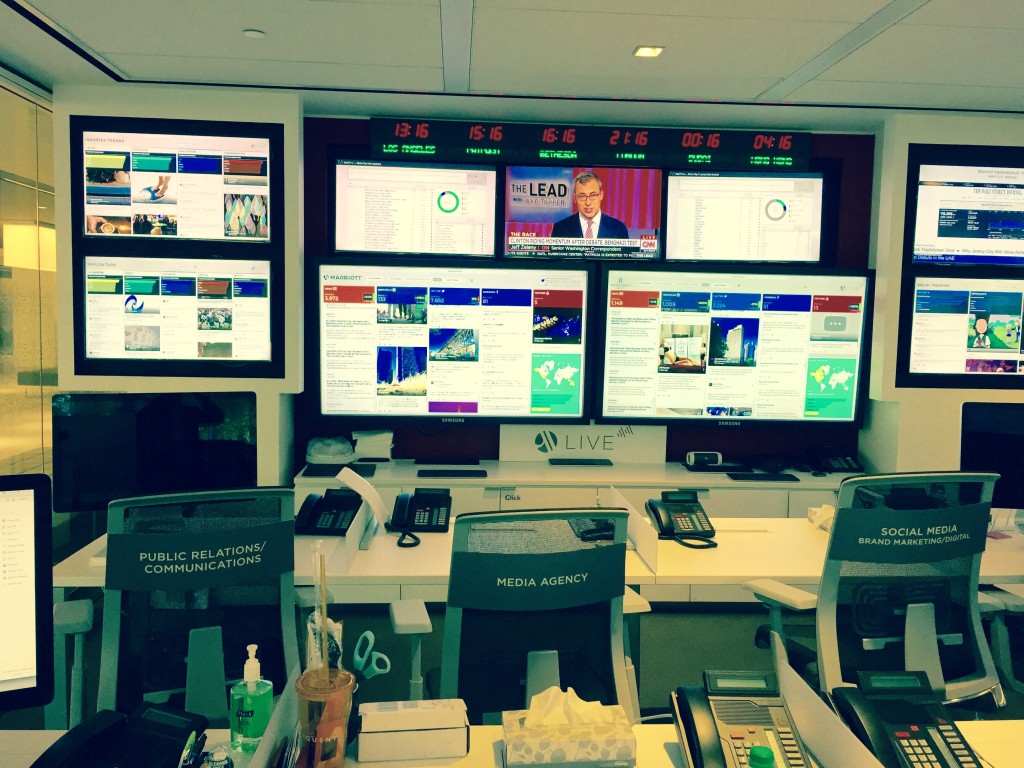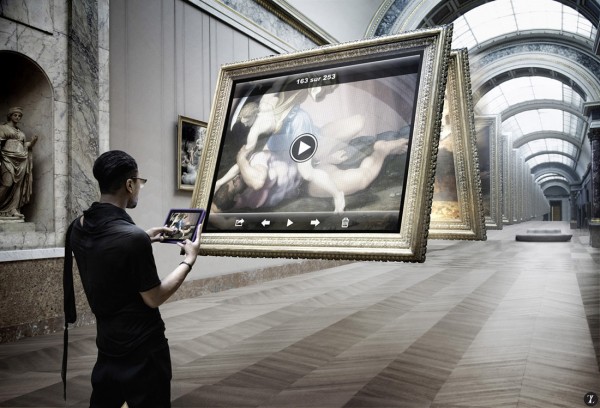I vividly remember standing in the middle of a self-proclaimed “living room of the future” at the National Association of Broadcasters (NAB) convention in 2005. The Microsoft trade show booth felt more like a Hollywood studio set of living room. A mostly cordless future came to life with a 2005 version of OTT devices, integrated content from a phone and, making it truly Hollywood, it all worked seamlessly without having to scream for IT support.
Fast-forward more than 10 years: I recently had the same “this is it” moment. I’d been spending a lot of time lately parading around the country to convince corporations, universities and museums to start thinking of themselves as holding companies, with one of their sub-organizations being a media shop.
Marriott created M Live, a media company embedded within its U.S. headquarters in Bethesda, Md. They brought in leading content creators and marketers from the likes of Disney and CBS to piece together what I believe to be a great case study of a brand going all-in on multi-channel marketing. It’s an integrated production center that combines original content creation, social media, real-time business metrics all while breaking down internal politics and silos. And so far, it seems to be working.
“We are a media company now.” David Beebe, Marriott’s vice president of global creative, said that. And I said “Bingo!” That quote underscores the mindset that I’ve been trying to convey to colleagues and clients alike.

Using storytelling to shape and market your brand is no longer just a trend, it’s a way of life. While most corporations should have already taken note, there is one industry ripe to be Marriott-ed – museums.
There are three reasons why museums are best suited to embrace the media-company mentality, engage communities, and create new and powerful revenue streams.
1. A Content Advantage
Part of Marriott’s secret sauce has been creating entertaining content that is devoid of overt commercialism. The M Live team has produced films that get travel-ready consumers associating places like Paris with their brand. Dan Beebe calls it the three Cs: “scaling content, then building a community around that content, and driving commerce.”
Most museums are in the business of educating and inspiring consumers about their subject matter. Whether it’s archaeology or modern art, photography or baseball, it doesn’t matter — museum staffers are passionate about connecting dots for their consumers. In our socially connected world, the ability to create community around these areas of passion is a helluva lot easier than trying to create relevance for a hotel chain.
It’s inherently authentic. Throw in the fact that at the majority of museums more than 90 percent of the archived materials aren’t even on display to the public, and you have a seemingly endless base of content to start with. Much of it is waiting to get busted out of that hermetically sealed closet.

You’ve also got an incredible resource right under your roof. Curators and museum administrators are experts on the subject matter. By thinking of them as your “stars,” you can come up with ways to transform their knowledge in to a never-ending stream of content — interviews, podcasts, feature stories, trendspotting, you name it — outside content creators can help you build the media machine to engage your community.
2. A Community-Building Advantage
While navigating today’s data-hungry world of SEO, social and hyper-targeted markets is by no means easy, serving up relevant content sure is. The folks at Marriott have two steps in targeting travelers and then getting them to engage with content that deftly connect the dots back to their brand. That’s a challenge, since savvy consumers know you’re still trying to sell them on something.
But if you’re a museum specializing in, say, photography, think about how much easier it is to track down target markets on Facebook or Instagram. Delivering content that speaks to these audiences by providing value (which should be relatively easy based on your assets) is natural. When you associate your brand with this content and they connect it with the fact you’re a museum, you have a leg up on authenticity compared to a corporate brand. Not to mention how extremely cost-effective it is to market on social media platforms…
One more thing we see is new brands from companies that are distinctly different from their standard corporate-communications channels. We call them “sub-brands” — with their own name, distinct URL and social media channels. If you think of your museum as a presenting sponsor, it helps frame the approach.
3. A Revenue Advantage
Ahh, the bottom line. In many cases, content allows museums to think about revenue source outside of the traditional “Big Three” — turnstiles, memberships and donations. With a robust, engaged digital community, you have a world of new possibilities.
The most compelling part of the Marriott case study is the direct bottom-line impact. The fact that the company is creating new revenue streams — licensing content to media companies, for one — while increasing transactions on its core business is very relevant for museums.
If done well, museums exerting a media-company mentality can similarly generate new revenue streams. Having a critical mass (think millions) of engaged consumers around a single topic from Salt Lake City to Singapore opens up entirely new conversations with new sources of power, influence and funding.
We know this firsthand. We’ve been walking into major brands’ marketing departments to discuss multi-year, multi-million deals on this very topic. Engaged, passionate audiences by the millions that align with their brand? It’s the essence of what brand marketers want — and are willing to pay for.
There are other lifts as well. Your grant opportunities benefit from showcasing a critical mass of engaged fans of your topic. The groundwork is laid for things like virtual or digital memberships from geographically challenged folks who may never get a chance to visit your museum. And institutions can see a lift in actual gate receipts (albeit modest ones) as long as they’re delivering on the brand promise they’re projecting digitally. But that’s another post in and of itself.
One caveat: It’s not easy. It takes time. It takes money. It takes the self-awareness to know you need outside help and resist the urge to dilute the message by overtly selling your brand. However, just like the Microsoft “living room of the future,” this trend is well on its way to becoming a reality. I truly believe this is the next frontier for museums. If you’re not willing to explore this and stay curious, you can bet your competition will be.
If you’d like to learn more about content strategy and digital marketing, or you have thoughts or questions about where the museum space is going, visit the Museum Revolution website. Or, drop me a note at [email protected] or @_JaySharman.
